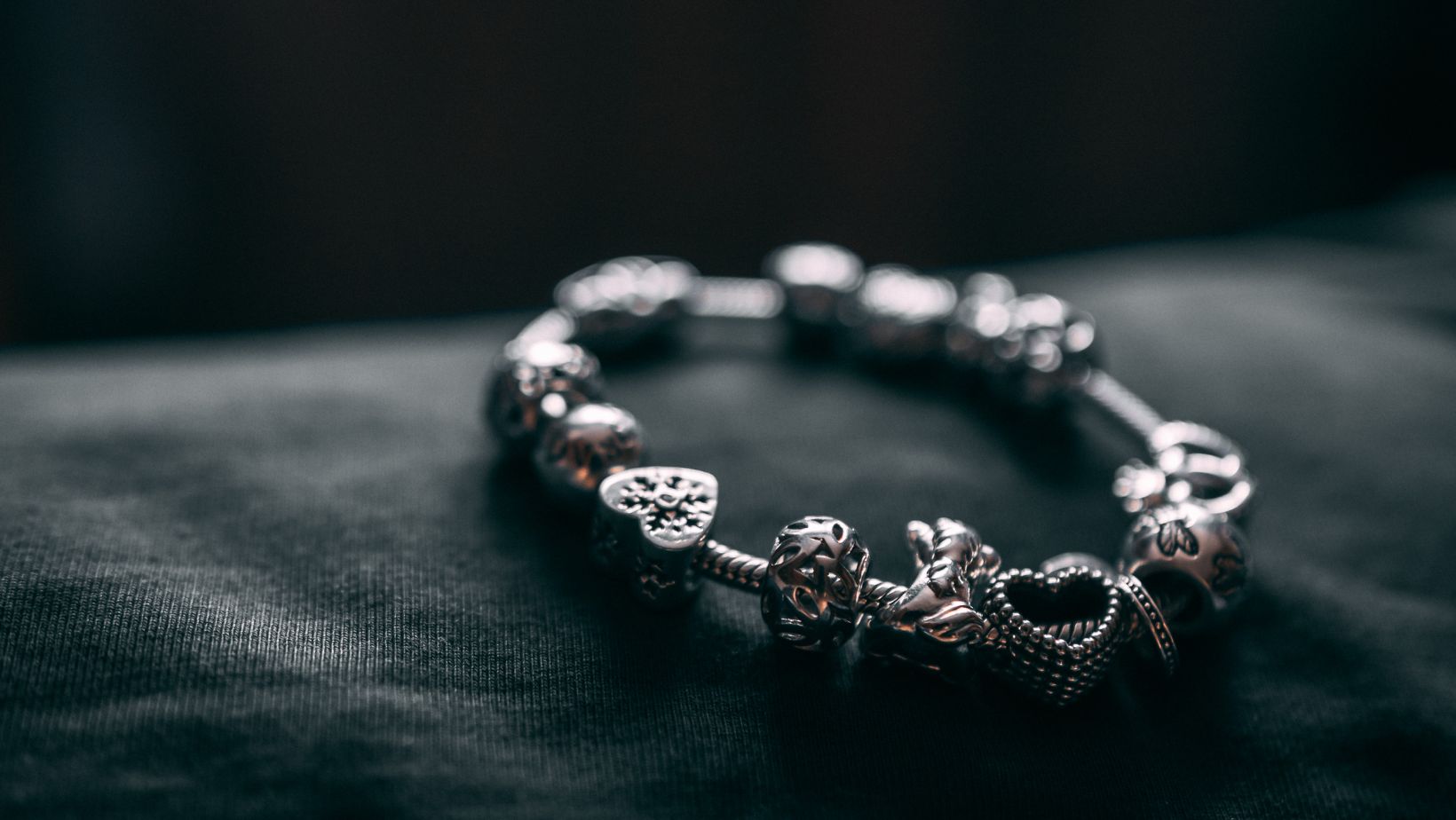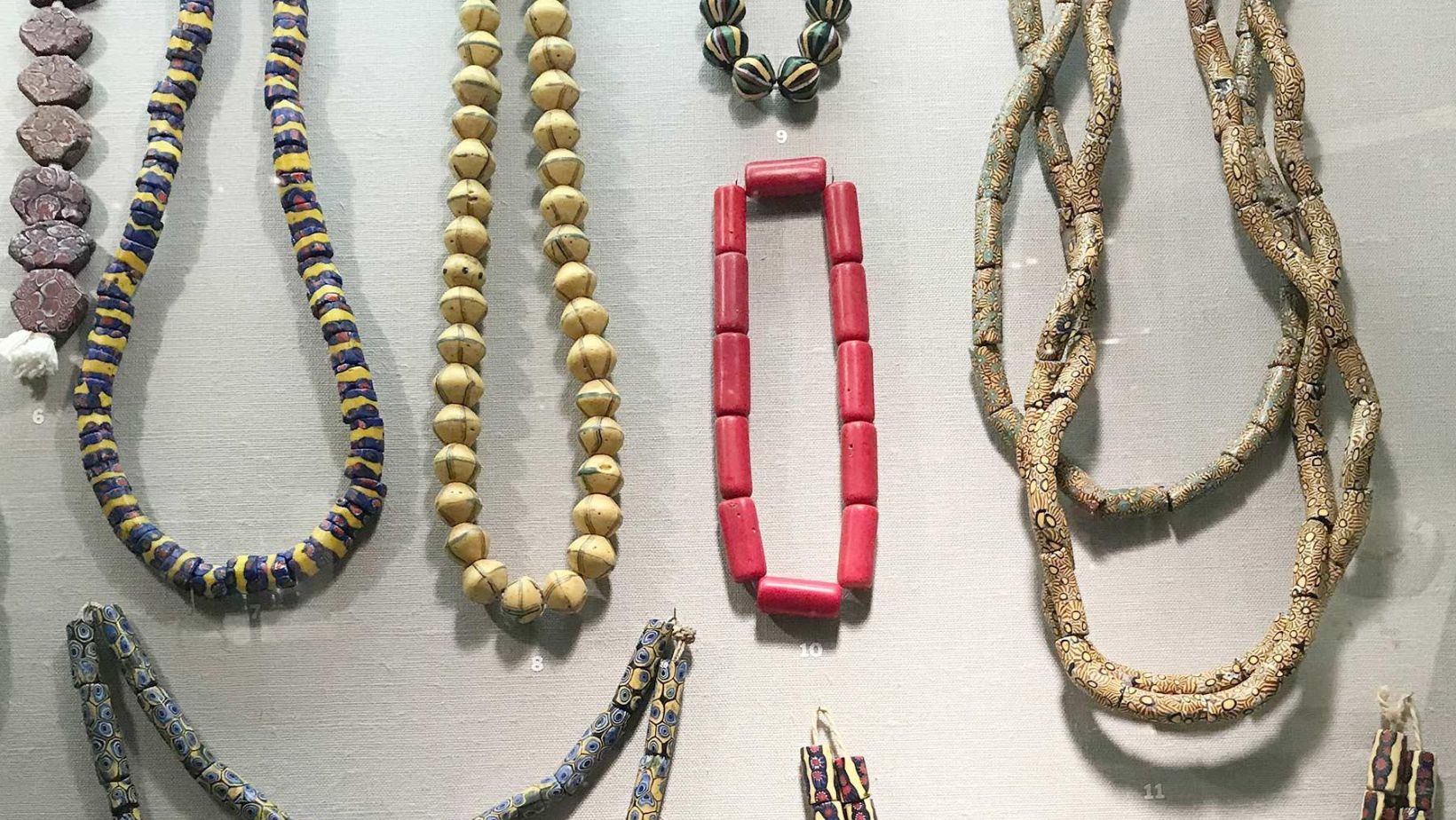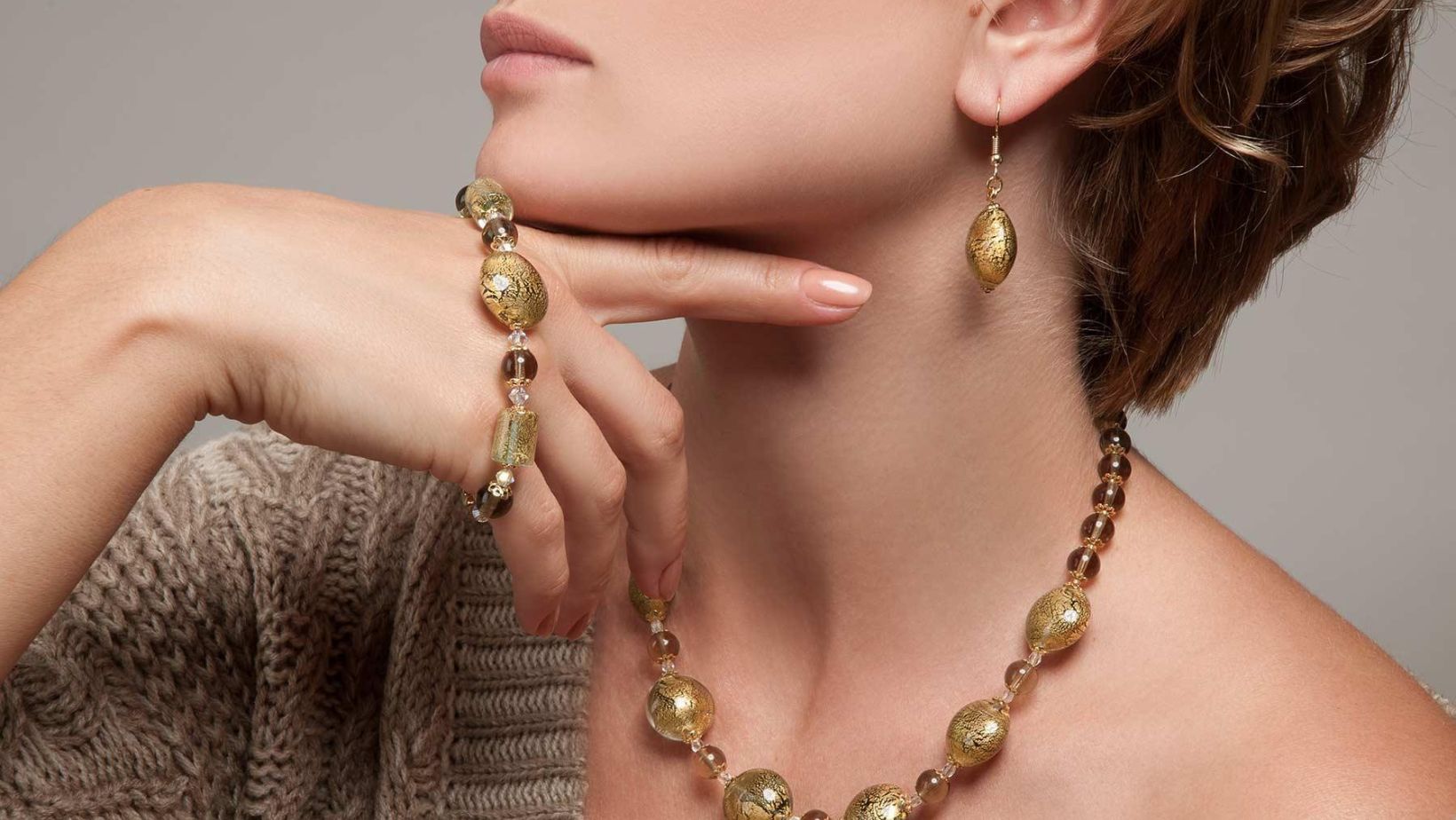Unveiling Glass Jewelry: From Ancient Origins to Glass Art of Murano, Italy

It is known that humans have been fascinated with adorning the body with all forms of jewelry for millennia. Among the countless materials exploited for this purpose, glass stands out. Glass is not just renowned for its captivating beauty but also for its unique reflective qualities and remarkable versatility.
Glass jewelry has transcended the boundaries of time and geography, showcasing a rich and dynamic history that mirrors human ingenuity and the evolution of aesthetics across cultures. What makes glass so special? Perhaps it’s the way it captures light, refracts it, and brings it into harmony with form and color, creating a play of shades and brilliance that never ceases to captivate. Or maybe it’s the way glass can be molded, blown, and spun into any imaginable form, offering infinite possibilities for artistic expression.
History Of Glass Jewelry
The practice of creating glass jewelry has an impressive lineage, stretching back to the early days of human history. The origins of glass jewelry are found in the cradle of human civilization itself, ancient Mesopotamia, where archaeological evidence points to its existence as far back as 3,500 BCE. From these early origins, glass jewelry-making techniques migrated and evolved, and the art form blossomed in ancient Egypt around 1,500 BCE.

Ancient glass jewelry beads, bracelets, and necklaces
Egyptian artisans became renowned for their elaborate beadwork, creating intricate designs with tiny glass and faience beads, adding new dimensions of color, sparkle, and symbolism to their artistic repertoire. The baton of glass craftsmanship was later passed on to Byzantium and then to the Roman Empire, where it flourished and influenced jewelry styles across the vast dominion. From its humble beginnings in ancient civilization, glass jewelry has become an enduring symbol of human creativity and a testimony to our aesthetical sense and innate desire for beauty.
How Artisans Create Glass Jewelry
Creating glass jewelry is a perfect blend of science and art, requiring both technical skill and an artistic eye. The process involves heating silica-based sand until it reaches an almost liquid state and a consistency of honey such that it can be shaped and stretched. This liquid glass is then manipulated. Glass artisans can either blow air into it with a hollow tube, spin it on a rod and simultaneously shape it, or press it into a mold to create the desired shapes.
Once the glass has been formed, it undergoes a process known as annealing. In this process, the glass is cooled very slowly in a special annealing kiln to remove any internal stresses caused by the rapid cooling on the outside of the glass. This step is crucial to prevent the glass from cracking or shattering after the object is finished. These processes, from melting to annealing, have been passed down through generations of artisans, preserving the traditional craft while adapting and innovating with advancements in technology and design preferences.
Glassmaking Techniques: Lampwork, Mold Casting, Fused Glass
Beyond these basic steps, there are several other fascinating techniques employed in the creation of glass jewelry. One of these is lampworking, which involves using a torch to melt thin rods of glass. The molten glass is wound around a metal rod, forming the core of the bead. The artisan then uses a range of tools to shape, pattern, and texture the bead while it’s still hot and malleable. This process allows the creation of beads, earrings, rings, pendants, and other small jewelry pieces, each unique and detailed, reflecting the skill and artistic vision of the glass artisan.

An artisan making Murano Glass jewelry in Murano, Italy
Kiln casting is another method of creating glass jewelry. In this technique, chunks of glass are placed inside a mold, which is then heated in a kiln until the glass melts and fills the mold. When the glass cools and hardens, it takes on the shape of the mold, enabling the production of jewelry pieces in various shapes and sizes. Similarly, fused glass jewelry involves arranging pieces of glass in a design, then heating them in a kiln until they fuse together to form a single piece.
The versatility of these methods allows for the inclusion of various materials, such as metals, including gold, silver, and copper, into the glass. This is also how the masters create different colors of glass by adding various minerals to the glass mixture. Finally, the multitude of glass-making methods allows for the creation of a variety of effects, like bubbles, regular patterns, or cracks, leading to an unlimited array of design possibilities.
Murano Glass Jewelry
There is a history of glassmaking in many places around the world. However, when we talk about the height of glass jewelry craftsmanship, one place, in particular, comes to mind, and that is Murano, Italy. Known worldwide for its awe-inspiring blown glass, the artisans of Murano Island have been perfecting their craft since the 13th century. Initially, their techniques were cloaked in secrecy, protecting the trade and ensuring that Murano maintained its monopoly over this highly desirable art form. Over time, as these techniques spread, Murano Glass jewelry became a symbol of refinement and elegance, cherished by the aristocracy throughout Europe and, later, by millions of women around the world.

Glass of Venice Murano Glass jewelry with 24K gold leaf
The evolution of Murano Glass jewelry reflects both the changing tastes of society and the innovative spirit of its artisans. Different periods favored different designs and techniques, each contributing to the rich tapestry of Murano Glass art. For instance, the 16th century saw the popularity of a bead-making technique known as “a lume.” This technique, which involves the application of molten glass onto a metal rod, allowed the production of intricate and vibrant beads.
However, by the 18th century, aesthetic preferences had shifted, and a new type of glass called “avventurina” gained favor. Characterized by its mesmerizing sparkle, avventurina contains tiny copper inclusions, which give it its distinctive glittery appearance. In contemporary times, the fashion trends for Murano Glass jewelry lean more towards larger, statement pieces and monochrome minimalistic designs. These include cocktail rings, dangle earrings, rubber-and-glass bracelets, or millefiori pendants on leather cords.
The Place of Murano Jewelry in Modern Fashion
In today’s fashion world, the trends in Murano Glass jewelry emphasize the harmonious blend of traditional techniques with modern styles. Bold and vibrant colors such as royal blue, emerald green, and fiery red dominate the color palette, often contrasted with silver or gold leaf inclusions for a touch of opulence.
The styles vary widely from the lavish and elaborate, such as large pendants and bold cuff bracelets, to the more minimalist, including delicate glass bead necklaces and small stud earrings. Yet, amidst all these changes, the essence of Murano, Italy, remains undiluted. Each piece of blown glass jewelry still reflects the passion for art, the commitment to beauty, and the masterful craftsmanship that has always been the hallmark of this Venetian island of Murano.
Given all the factors discussed above, it is clear why Murano Glass jewelry became so desirable for lovers of Italian fashion and unique artisan accessories. Beyond the specific skillset of Murano masters, the journey of glass jewelry, from its nascent beginnings in ancient civilizations to the breathtaking creations of Murano, Italy, stands as a powerful testament to human creativity and our relentless pursuit of beauty. Glass jewelry holds more than just a visual appeal; it carries historical significance, a narrative of technological advancement, and a representation of cultural evolution.
Why Glass Jewelry Remains Popular
Whether you wear glass jewelry for its symbolism, to celebrate the craft it represents, or simply for the sheer pleasure derived from its radiant colors and designs, its appeal remains timeless. As fashion trends evolve, Murano Glass jewelry continues to be the gold standard preferred by artisan jewelry lovers around the world. Glass jewelry in general and Murano Glass jewelry, in particular, continues to captivate, providing us with wearable pieces of art that seamlessly bridge the past and the present, the fashion, and the art. Glass jewelry remains popular because it allows us to wear a piece of history, narrating tales of human ingenuity, artistic vision, and the timeless quest for beauty.
-
 Personal Finance9 months ago
Personal Finance9 months agoHow Do I Find My UCAS ID Number?
-
 Success6 years ago
Success6 years agoConsistency: The Key Ingredient to Success
-
 Personal Finance9 months ago
Personal Finance9 months agoWhat Does Conditionally Approved Mean For An Apartment?
-
 Motivation3 years ago
Motivation3 years agoHow To Become a More Organized Person?
-
 Others4 years ago
Others4 years agoWork Health and Safety: 8 Reasons to Maintain a Clutter-free Office
-
 Entrepreneurs4 years ago
Entrepreneurs4 years agoWhy Diversity is Key in Business Marketing
-
 HK Pools9 months ago
HK Pools9 months agoThe HK Pools Forum Comunity Jos Markotop 2D Warna Kuning – A Great Way to Stay Connected
-
 Sport2 years ago
Sport2 years agoWhat Makes Soccer Betting So Great?



















